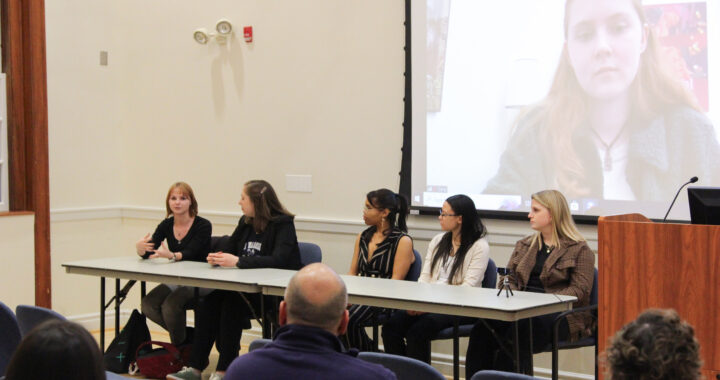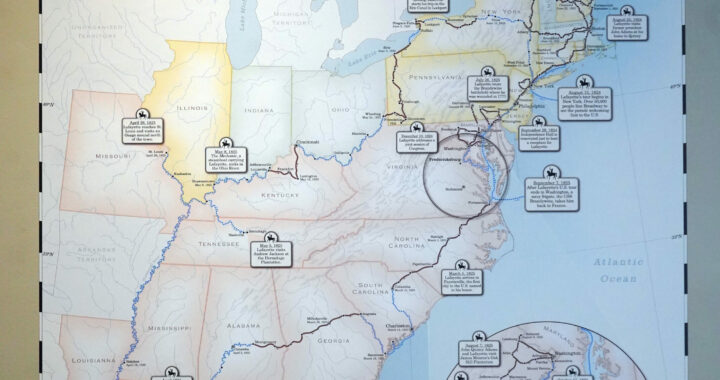100 years: The Weekly Ringer
3 min read
This is a comic printed on the front page of a 1931 edition. | The Bullet, University Archives
by JOSEPHINE JOHNSON & MASON GODEK
News Editor & Staff Writer
On its first issue of 2022, UMW’s student newspaper is simultaneously celebrating its 100-year legacy and the beginning of a new era. Jan. 20, 2022 marks the hundredth anniversary of the paper’s first publication in 1922 and the first issue under its new name: The Weekly Ringer.
1920s
Three issues of Mary Washington College’s The Bullet were published in 1921, but there are no remaining copies in the University Archives. Therefore, the year of the paper’s inception is considered to be 1922, and its slogan is “Serving the community since 1922.”
When The Bullet first began publication, a subscription was 50 cents a year, which translates to roughly $7 in modern money. Publication was monthly and consisted of alumni news, the Student Government Association’s constitution, advertisements for local businesses, as well as the news, style and sports sections.
UMW’s archive does not have issues of The Bullet from most of the years 1923 to 1928. According to the University Archives, The Bullet ceased publication at the end of the 1923-1924 academic year and did not publish again until 1927. The archive has not located any copies from 1921, 1924 or 1927.
1930s
In 1930, the publication changed from monthly to bi-weekly, and the subscription price changed to $1 a year.
This issue also had a controversial joke section, including quips like “Loudspeakers should be bought, not married,” and “Gentlemen prefer blondes. It is said that the ‘flu’ is more likely to attack brunettes than blondes.”
1940s
During World War II, The Bullet had few articles alluding to global news and the war.
In May of 1945, The Bullet published the story “Friedlind Wagner Tells Experiences in Nazi Germany.” Wagner had spoken at Mary Washington College about her life and growing up with Adolf Hitler.
The article reads, “Miss Wagner knew Hitler from the time that she was five years old until her outspoken opposition to Nazi doctrines forced her to in 1937 flee her home in Bayreuth, where for many years her family had supervised the great Wagner music festivals.”
1960s
The Bullet got political in the 1960s, publishing student opinions as well as some global news during the Vietnam War. One letter written by students even made its way to the Oval Office of President Lyndon Johnson.
Throughout the 1970s and 1980s, The Bullet continued to report on local happenings, like the trial of four students living in Westmoreland Hall who were assumed guilty of vandalism and excessive noise, and even some political opinions surrounding communism. The “Westmoreland Four” were not guilty.
This era of the paper saw the addition of male writers, as Mary Washington College changed to a co-educational school.
1990s
According to The Blue & Gray Press Stylebook, the paper began to change around 1990 when it came under new leadership. The goal was to bring forth more serious journalism throughout the rest of the paper’s tenure. The 1990s yielded an interesting time for the college. Crime rose, and so did the number of stories on more serious issues, like crime reports and people’s stances on social issues.
Sections in the paper throughout the 1990s include front page news, opinions, entertainment, sports and features.
2000s
According to The Blue & Gray Press Stylebook, the paper garnered a more positive reputation in terms of article quality. The paper won awards from the Society of Professional Journalists and Virginia Press association in the early 2000s.
The paper was renamed to The Blue & Gray Press in 2014 and has since been renamed to The Weekly Ringer.
Jess Kirby contributed to reporting for this article.











